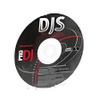Free music player and organizer
Free music player and organizer
Vote: (1 votes)
Program license: Free
Version: 1.0.2
Works under: Windows
Vote:
Program license
(1 votes)
Free
Version
1.0.2
Works under:
Windows
Pros
- Comprehensive music management features
- Advanced tag editing and organization tools
- Support for album covers and lyrics integration
- 64-bit and 32-bit version availability
- Roots in reputable music players like Clementine and Amarok
Cons
- Dated, text-heavy interface
- Can be slow with large music libraries or over network
- Unsigned application may trigger security alerts
- Interface may not appeal to all users
Introducing Strawberry Music Player
Strawberry Music Player is a tailored audio solution designed for meticulous music lovers and audiophiles seeking an organized and enriching listening experience. Born from the lineage of Clementine and Amarok music players, it caters specifically to those in need of a more advanced music management system that deftly handles large music libraries with finesse.
Key Features and Performance
This robust application comes in both 64-bit and 32-bit versions to accommodate a wide range of systems and ensures compatibility with various user needs. It stands out with its ability to not just play music, but also manage and organize vast swathes of audio files. Users can easily shuffle, queue, skip, and enjoy their music while also having the functionality to create dynamic playlists and organize albums, artists, and songs.
Strawberry Music Player distinguishes itself with its comprehensive Settings area. Here, users can go beyond basic listening and personalize their experience. It allows for the association of album covers and song lyrics, by either creating unique covers or sourcing existing ones. The inclusion of lyrics from preferential sources adds an extra layer of enjoyment for those who like to follow along or sing with their favorite tracks.
Tag editing is another noteworthy feature. The ease with which users can access and modify track information through the Edit Track Information option in the context menu further exemplifies Strawberry’s utility as a music library organizer, not just a simple player.
Despite this advanced functionality, the application can face some challenges. As with any richly featured software, the load times and processing can become notably slower when cataloging larger libraries, especially over a network.
User Experience and Interface
However, users might find the interface somewhat dated. The aesthetic is utilitarian, prioritizing function over form, with a focus on textual information rather than graphical flair. This design choice may be off-putting to those accustomed to the sleek, modern interfaces of typical contemporary applications, but it might appeal to users who favor straightforwardness and a no-frills approach.
Unsurprisingly, given its Linux roots, Strawberry Music Player has a unique appeal that may resonate with users seeking a blend of an old-school interface with rich functionality. However, upon initial download and installation, some users might encounter alerts from Windows' SmartScreen Defender due to the application being unsigned.
Conclusion
In essence, Strawberry Music Player robustly delivers on its promises—it offers an unobtrusive yet powerful way to manage and listen to music. It’s an audio player that steps back and lets the user take control of their music experience. Approachable for the average user yet dense with features for the audiophile, it presents a middle ground for those in-between. The main downside is the potentially cumbersome nature of handling large collections and an interface that may feel excessively text-centric for modern tastes.
Pros
- Comprehensive music management features
- Advanced tag editing and organization tools
- Support for album covers and lyrics integration
- 64-bit and 32-bit version availability
- Roots in reputable music players like Clementine and Amarok
Cons
- Dated, text-heavy interface
- Can be slow with large music libraries or over network
- Unsigned application may trigger security alerts
- Interface may not appeal to all users




